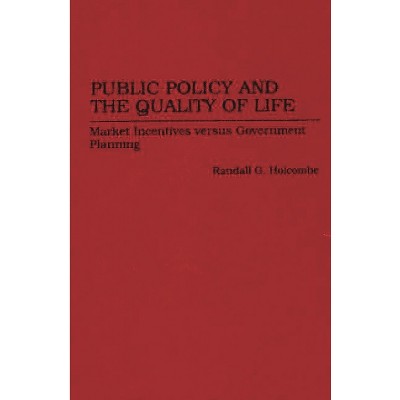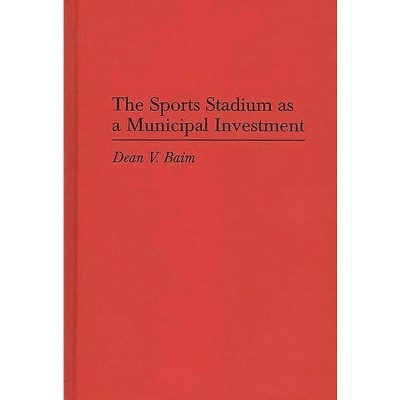Sponsored

Charting Twentieth-Century Monetary Policy - (Contributions in Economics and Economic History) by Silvano a Wueschner (Hardcover)
In Stock
Sponsored
About this item
Highlights
- Herbert Hoover, as Secretary of Commerce, and Benjamin Strong, as Governor of the Federal Reserve Bank of New York, played a critical role in the formulation of American monetary policy during the 1920s.
- About the Author: SILVANO A. WUESCHNER is Assistant Professor of History at William Penn College.
- 208 Pages
- Business + Money Management, Money & Monetary Policy
- Series Name: Contributions in Economics and Economic History
Description
About the Book
Herbert Hoover, as Secretary of Commerce, and Benjamin Strong, as Governor of the Federal Reserve Bank of New York, played a critical role in the formulation of American monetary policy during the 1920s. Yet little attention has been given to the relationship between them--at first cooperative, then increasingly one of conflict and factionalism--or to the impact of that relationship on policy formulation. This book sheds new light on their roles in policy making and relates those roles to larger conflicts over where policy should be made, how the Federal Reserve System should be structured, and the balance that should be struck between international, national, and regional considerations.
Focusing on the Hoover-Strong relationship from a political rather than a purely economic perspective, the book's scope includes both domestic and international aspects of Federal Reserve policy formulation. New sources have enabled the author to provide both fresh details and a broader interpretation. Elaborating on the belief that the Depression resulted from policies developed during the autumn of 1927, the author contends that the foundation for those policies was laid with America's decision to underwrite the Dawes plan, the decision to underwrite England's return to the gold standard, and the involvement in European monetary stabilization--all issues over which Hoover and Strong disagreed.
Book Synopsis
Herbert Hoover, as Secretary of Commerce, and Benjamin Strong, as Governor of the Federal Reserve Bank of New York, played a critical role in the formulation of American monetary policy during the 1920s. Yet little attention has been given to the relationship between them--at first cooperative, then increasingly one of conflict and factionalism--or to the impact of that relationship on policy formulation. This book sheds new light on their roles in policy making and relates those roles to larger conflicts over where policy should be made, how the Federal Reserve System should be structured, and the balance that should be struck between international, national, and regional considerations.
Focusing on the Hoover-Strong relationship from a political rather than a purely economic perspective, the book's scope includes both domestic and international aspects of Federal Reserve policy formulation. New sources have enabled the author to provide both fresh details and a broader interpretation. Elaborating on the belief that the Depression resulted from policies developed during the autumn of 1927, the author contends that the foundation for those policies was laid with America's decision to underwrite the Dawes plan, the decision to underwrite England's return to the gold standard, and the involvement in European monetary stabilization--all issues over which Hoover and Strong disagreed.Review Quotes
"Wueschner makes an important contribution to the fuller and more politically oriented history now needed if we are to understand the workings and capabilities of what has become our central institution of macroeconomic management....[t]he study sheds much new light on the debates that swirled around the system's international actions and the "easy money" policy that is adopted to facilitate and sustain them."-Business Library Review International
?In this solid book, which, at first blush, appears as if it could serve as a primer for today's post-dot.com economy and the recent NASDAQ crash, Silvano A. Wueschner examines the Federal Reserve Board's role in national and international economics...fine work.?-South Dakota History
?Wueschner makes an important contribution to the fuller and more politically oriented history now needed if we are to understand the workings and capabilities of what has become our central institution of macroeconomic management....[t]he study sheds much new light on the debates that swirled around the system's international actions and the "easy money" policy that is adopted to facilitate and sustain them.?-Business Library Review International
?Wueschner's analysis sets the stage for a deeper understanding of the politics of the Great Depression....Wueschner's history has much to offer two groups of academic researchers -- those with a general interest in the politics of US democracy and those with a special interest in the monetary policy of the early Federal Reserve.?-EH-Net
"In this solid book, which, at first blush, appears as if it could serve as a primer for today's post-dot.com economy and the recent NASDAQ crash, Silvano A. Wueschner examines the Federal Reserve Board's role in national and international economics...fine work."-South Dakota History
"Wueschner's analysis sets the stage for a deeper understanding of the politics of the Great Depression....Wueschner's history has much to offer two groups of academic researchers -- those with a general interest in the politics of US democracy and those with a special interest in the monetary policy of the early Federal Reserve."-EH-Net
About the Author
SILVANO A. WUESCHNER is Assistant Professor of History at William Penn College.










